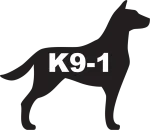Dog Training World › Forums › Behavior Problems › Dog Anxiety › Pit bull/Dalmatian being needy and human possessive. › Reply To: Pit bull/Dalmatian being needy and human possessive.
-
Thanks for posting this case! I will give my advice and insight:
First, this lecture and the form (linked at the bottom of the lecture) especially is super helpful anytime anyone posts a case, even if you fill it out yourself. It helps all the members and myself to troubleshoot what is going on and saves lots of trouble for you answering background questions:
https://dogtraining.world/knowledge-base/collecting-client-information-5-0/
My take from the information about the case:
One of the great things about running free puppy classes for over a decade was watching all the trends of puppy play, especially as the puppies matured. This was invaluable in helping their owners make appropriate management and training plans for their individual dogs.
I don’t like the term, but in some puppy socialization group circles the behavior you are describing of “being too rough” during play is sometimes called being a “bully”. Usually when you get a dog that is described as being “too rough”, what I notice is that technically it is more accurate to say that the pup/dog does not respond or respect communication from the other dog that it is uncomfortable/doesn’t want to play anymore/etc.. With some dogs if the other dog doesn’t want to play as rough and resorts to acting defensively it can then trigger a fight from the “bully” that wont take no for an answer.
There are many ways to manage this with puppies, including only pairing those dogs with other pups that equally enjoy the rough play, “saving” the bullied dog by separating them before the other dog gets defensive and see if the “bullied” dog wants to return to the restrained “bully” dog, or pairing the rough dog with a clearly larger and stronger dog of balanced temperament that can discipline appropriately.
In the behavior course we learn about how pups USUSALLY respect much older dogs when their behavior is “normal”.Once we determine that a pups behavior isn’t in typical “normal” parameters for interaction, management plans need to immediately be considered while maximizing the quality of life and positive interaction of the dog. After a lot can be done with leadership and true obedience, mostly through a solid “leave it” command at least when supervised. Dogs will only be as well behaved in the presence of other dogs and humans as they are naturally or as they can be under the supervision of someone who is ready to enforce rules.
As a past owner of many bully breeds and working dutch/mal/German shepherds, some were naturally “normal” in their interaction and others were OK with me supervising, but some I never would trust unsupervised with other dogs. I had two American bulldogs (a male and female) that seemed to adore each other, but there was one times that my male locked on to the female for relatively minor incident (both were approaching a dropped treat at the same time), and I had to physically remove him, so I always separated them when I was not close by or not home after that… management.
Many bully breeds, American pit bulls in particular were definitely bred to have a limited “cut off” switch once they get into a confrontation, even if another dog is giving signals of surrender which is why, even with lots of protest, some doggy daycares and larger corporations like Petsmart make blanket policies to not accept them with fairly unskilled employees instead of evaluating each dog individually.
I am all for treating each dog on a case-by-case basis but always take note of ethology and possible trends.
So my short input to this case is:
– acceptance that the pup may have “abnormal” to a degree play interaction that may always need some supervision.
– solid leadership and providing affection/all needs on terms that take any worry away from the pup or motivation to self-advocate.
– Solid “leave it” command as a must to break habits of obtrusive behavior with the other dog/dogs and to diffuse all posturing related to guarding of owner or problem area.
– likely food/bones etc.. should have a good plan to prevent problems either through management or if owner wants to be fancy through control drills that communicate to the dogs to not confront the others around possessions.


